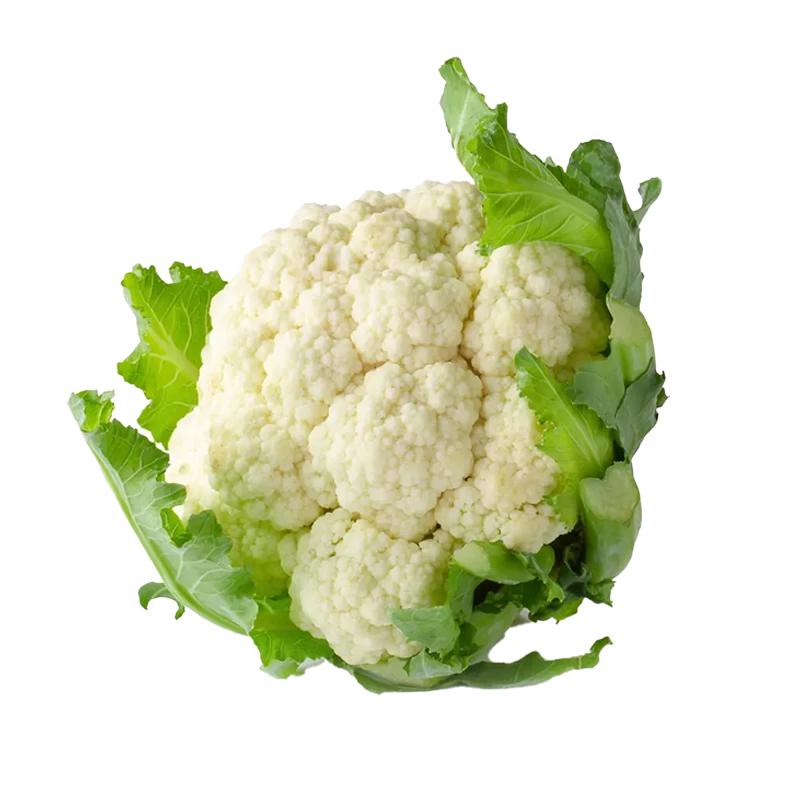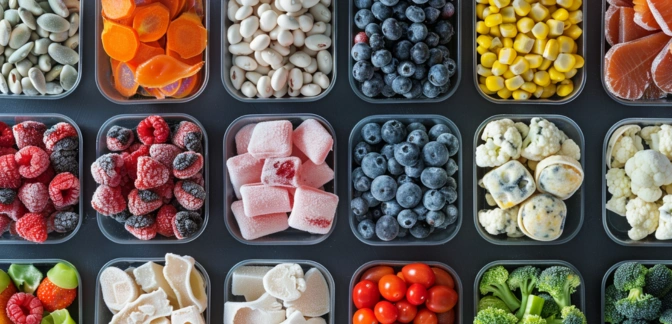Frozen Cauliflower — Nutrients, Health Benefits, And Shopping Tips

Written by Listonic Team
Last update on September 3, 2024
Nutrition facts
Nutrition facts
Amount per 100 g
Calories
🔥 34 kcal
| Nutrition per: 100 g | Value | % Daily Value* |
|---|---|---|
| Carbs | 5 g | 1.82% |
| Fiber | 3 g | 10.71% |
| Sugars | 2 g | 4% |
| Glycemic Index | 15 | - |
| Protein | 3 g | 6% |
| Sodium | 30 mg | 1.3% |
| Total Fat | 0 g | - |
*The % of Daily Value (DV) tells you how much a nutrient in a serving of food contributes to a daily diet. 2,000 calories a day is used for general nutrition advice.
34
🍏 Low-Calorie Foods
15
🟢 Low Glycemic Index
Did you know?
Health benefits
- Rich in vitamins and minerals such as Vitamin C, Vitamin K, and folate, which support overall health and well-being.
- High in fiber, promoting digestive health, regular bowel movements, and a healthy gut microbiome.
- Contains antioxidants that help protect the body from free radicals and reduce inflammation.
Health risks
- Potential for digestive discomfort such as gas or bloating when consumed in large quantities due to its high fiber content.
- Risk of contamination with harmful bacteria if the cauliflower is not properly handled or cooked before freezing.
- Potential loss of nutrients as some vitamins may be reduced during the freezing process, particularly if the cauliflower is not properly stored.
- Potential for pesticide residue on conventionally grown cauliflower, which can pose health risks if not properly washed before freezing.
How to choose frozen cauliflower
Frozen cauliflower is most beneficial if the florets are well-preserved and uniform in size. Inspect the bag for excessive ice crystals, which can indicate freezer burn.
Pass over packages where the cauliflower has yellowed or clumped together, as this suggests thawing and refreezing. Good frozen cauliflower should be as close to fresh in taste and texture when cooked.

How to store frozen cauliflower
Frozen cauliflower should be kept in the freezer until ready to use. Store it in its original packaging or transfer to a freezer-safe bag. Properly stored, frozen cauliflower can last up to a year.
Repeated thawing and refreezing can degrade its texture and taste. It’s important to keep it in a well-sealed container to prevent freezer burn. Maintain a consistent freezing temperature to ensure the best quality.
✅ Extra Tip
How long does it last?
Frozen cauliflower can last for 8-12 months when stored in an airtight container or freezer bag. To maintain its quality, keep it at a consistent freezing temperature.
What to do with leftovers?
Leftover frozen cauliflower can be used in a variety of dishes, both as a side or main ingredient. Roast it in the oven with olive oil and your favorite seasonings for a crispy, caramelized side dish, or steam it and use in a cauliflower mash as a low-carb alternative to mashed potatoes. Frozen cauliflower is also great in stir-fries or added to soups and stews for extra nutrition.
Use frozen cauliflower in a casserole with cheese and breadcrumbs, or blend it into a cauliflower soup for a creamy, comforting dish. If you have a lot of frozen cauliflower, consider making a batch of cauliflower rice by pulsing it in a food processor, then sautéing with your favorite seasonings. Cauliflower can also be used as a base for a grain-free pizza crust or blended into a cauliflower sauce for pasta. For a quick snack, try roasting cauliflower florets with buffalo sauce for a spicy treat.
👨⚕️️ Medical disclaimer
Discover products from other categories
Listonic Team
Fact-checked
Our editorial team checked this article to make sure it was accurate at the time of publishing it.
Get the top-rated shopping list app on your phone!







